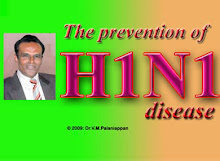 printable version printable version
Influenza update - 10 September 2010IntroductionThe Global Influenza Programme is regularly monitoring influenza activity worldwide and publishing an update every two weeks. The updates are based on all available epidemiological and virological data: influenza reports from WHO Regional Offices and Member States, data collected through FluNet and FluID. Data can vary in completeness and timeliness due to differences in available resources in Member States as well as influenza seasonality. Description: Displayed data reflect the most recent information reported to FluNet, WHO regional offices or on ministry of health websites in the last 2 weeks. The percent of specimens tested positive for influenza includes all specimens tested positive for all influenza subtypes. The pie charts show the distribution of virus subtypes among all specimens that were tested positive for influenza. The available country data were joined in larger geographical areas (Influenza transmission zones)with similar influenza transmission patterns in order to present an overview Map timeline for influenza activity
Open map in new window [jpg 965kb]
Influenza - Update 11610 September 2010 - Influenza activity is currently most intense in the temperate areas of the Southern Hemisphere and southern Asia. India is still experiencing a country-wide outbreak of H1N1 (2009) with active transmission and a substantial number of fatal cases in several states across the country. Chile reported on a sharp increase in respiratory disease activity in the last two weeks. All age groups are affected but the age groups below 65 years appear to be more affected that the older population. The level of activity in Chile in September is very unusual for this time of the year, as the country usually experiences a peak of respiratory disease in June and July. H1N1 (2009) virus has been the most commonly detected influenza virus so far this season but in the recent weeks there has been a shift towards influenza virus type B and influenza A (H3N2), with a decreasing proportion of H1N1 (2009) viruses. Respiratory Syncitial Virus transmission has also been widespread and intense, primarily affecting young children. Australia has reported increasing influenza activity throughout August and September, though recently, the numbers of patients seen in emergency departments for influenza-like illness seem to have levelled off in parts of the country. Overall, influenza activity is well below the activity observed in the winter of 2009. The most commonly identified influenza virus in Australia is H1N1 (2009), though influenza type B is also being detected. In New Zealand, influenza activity has decreased in the last week of August, although activity is still well above baseline levels and with significant regional differences. The majority of influenza detections have been characterized as H1N1 (2009). Levels of influenza transmission in 2010 are below 2009 levels nationally but have exceeded 2009 in some localized areas of the country. In Africa, the Central African Republic reported on their first ever detection of H1N1 (2009). South Africa observed a decrease in detection rate of influenza viruses in outpatients seen for respiratory disease for the second week in a row. Influenza type B has been the most commonly detected influenza virus throughout this winter season in South Africa though in recent weeks the proportion of H1N1 (2009) viruses has increased and a small, decreasing number of influenza A (H3N2) continues to be detected. links to earlier updates
Qualitative indicatorsThe qualitative indicators monitor: the global geographic spread of influenza, trends in acute respiratory diseases, the intensity of respiratory disease activity, and the impact of the pandemic on health-care services. The maps below display information on the qualitative indicators reported. Information is available for approximately 60 countries each week. Implementation of this monitoring system is ongoing and completeness of reporting is expected to increase over time. List of definitions of qualitative indicators
Maps of qualitative indicators
post-pandemic guidelines | 







